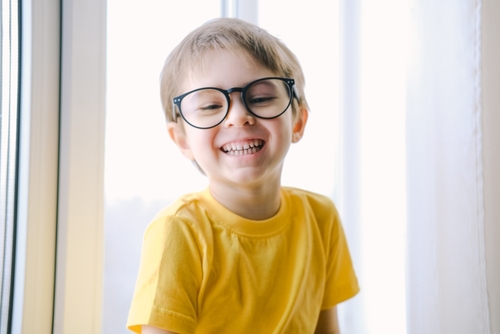
Recent research highlights a compelling link between children's sleep patterns and the development of myopia (nearsightedness). Traditionally, factors like genetics, prolonged near work, and limited outdoor activity have been associated with myopia. However, emerging evidence suggests that sleep habits may also play a significant role.
The Connection Between Sleep and Myopia
A study published in Nature and Science of Sleep examined over 1,500 children aged 4 to 6 years, revealing that:
- Social Jetlag: Children with inconsistent sleep schedules between weekdays and weekends (a phenomenon known as social jetlag) were more likely to develop myopia. This inconsistency disrupts the body's natural circadian rhythm, potentially influencing eye growth.
- Insufficient Sleep: Children sleeping less than 10 hours per night at age 5.5 showed increased axial elongation—a key factor in myopia progression.
- Poor Sleep Habits: Issues such as difficulty falling asleep, frequent night awakenings, and reluctance to sleep alone were associated with a higher risk of developing myopia.
These findings align with other studies indicating that late bedtimes and irregular sleep patterns can contribute to myopia development in children.
Implications for Parents and Caregivers
To support your child's eye health:
- Establish Consistent Sleep Routines: Aim for regular bedtimes and wake-up times, even on weekends, to maintain a stable circadian rhythm.
- Ensure Adequate Sleep Duration: Children aged 4 to 6 should get at least 10 hours of sleep per night.
- Create a Sleep-Friendly Environment: Limit screen time before bed, ensure the bedroom is dark and quiet, and engage in calming activities leading up to bedtime.
By prioritizing healthy sleep habits, you can play a pivotal role in reducing your child's risk of developing myopia.
For more information on myopia prevention and management, feel free to contact our clinic or schedule an appointment.
References:
- Wang M, et al. Sleep Duration, Sleep Habits, and Social Jetlag From 4 to 6 Years: Their Impacts on Myopia Among School-Aged Children. Nature and Science of Sleep. 2025;17:365-378.
- Ayaki M, et al. Decreased sleep quality in high myopia children. Scientific Reports. 2016;6:33902.PMC+1Dopavision+1
- Jee D, et al. Inverse relationship between sleep duration and myopia. Acta Ophthalmologica. 2016;94(3):e204-e210.









